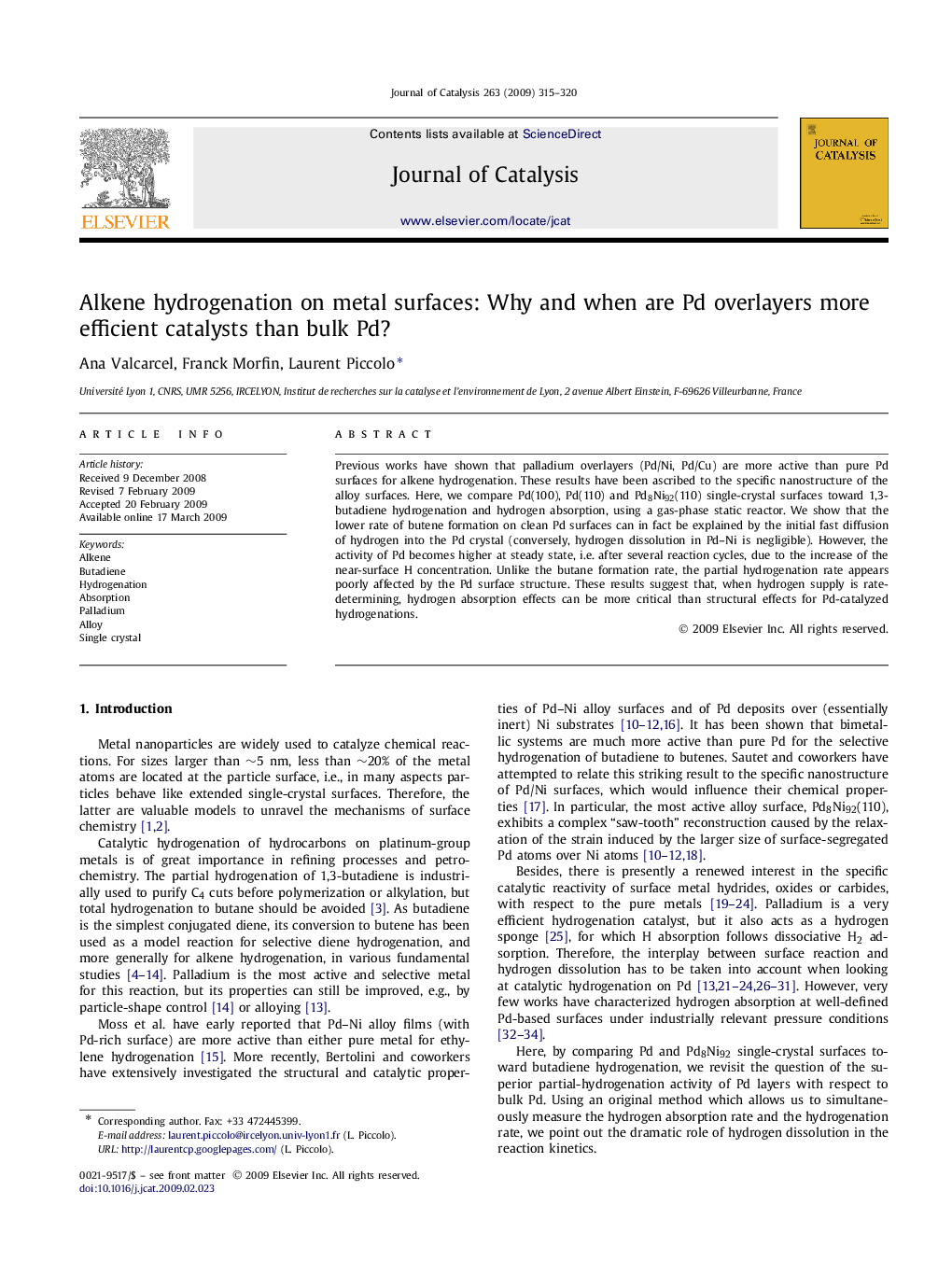| Article ID | Journal | Published Year | Pages | File Type |
|---|---|---|---|---|
| 62226 | Journal of Catalysis | 2009 | 6 Pages |
Previous works have shown that palladium overlayers (Pd/Ni, Pd/Cu) are more active than pure Pd surfaces for alkene hydrogenation. These results have been ascribed to the specific nanostructure of the alloy surfaces. Here, we compare Pd(100), Pd(110) and Pd8Ni92(110) single-crystal surfaces toward 1,3-butadiene hydrogenation and hydrogen absorption, using a gas-phase static reactor. We show that the lower rate of butene formation on clean Pd surfaces can in fact be explained by the initial fast diffusion of hydrogen into the Pd crystal (conversely, hydrogen dissolution in Pd–Ni is negligible). However, the activity of Pd becomes higher at steady state, i.e. after several reaction cycles, due to the increase of the near-surface H concentration. Unlike the butane formation rate, the partial hydrogenation rate appears poorly affected by the Pd surface structure. These results suggest that, when hydrogen supply is rate-determining, hydrogen absorption effects can be more critical than structural effects for Pd-catalyzed hydrogenations.
Graphical abstractPalladium surfaces become more active hydrogenation catalysts if hydrogen dissolution into the metal can be blocked.Figure optionsDownload full-size imageDownload high-quality image (91 K)Download as PowerPoint slide
